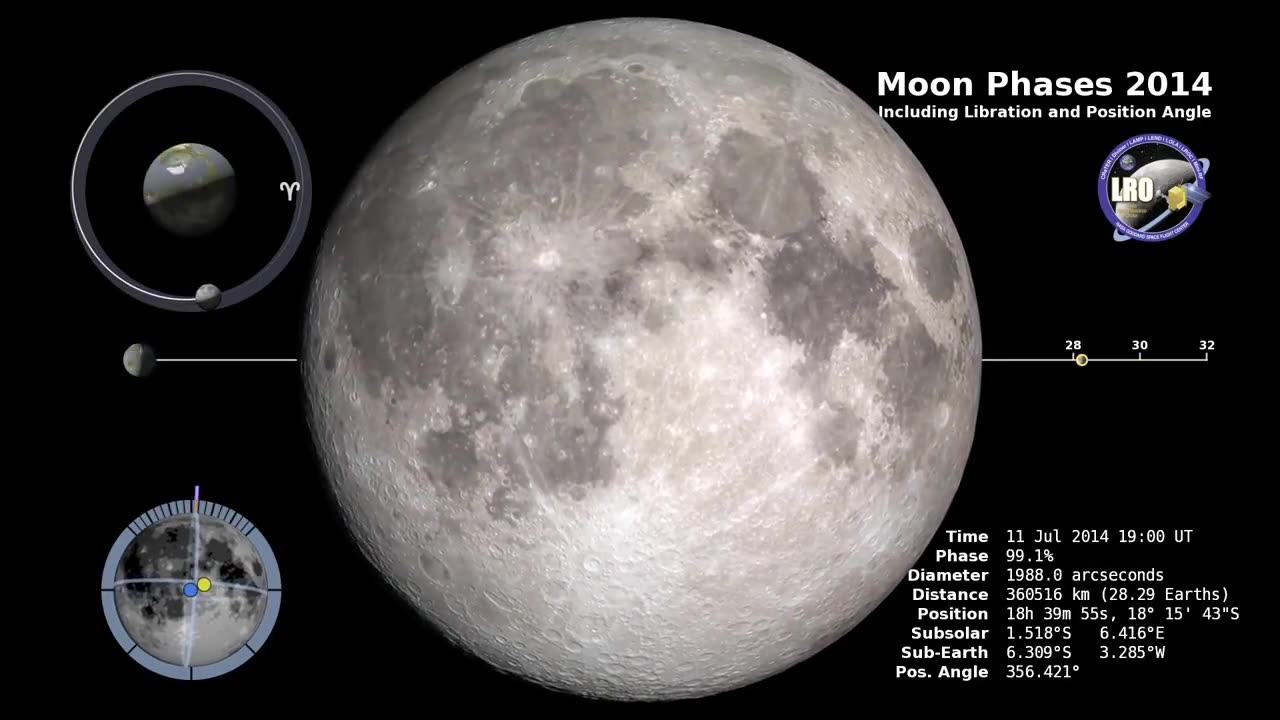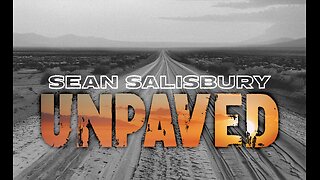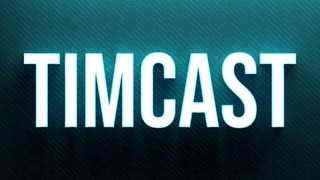Premium Only Content

Moon Phase and Libration North Up 2014
Lunar Reconnaissance Orbiter (LRO) has been in orbit around the Moon since the summer of 2009. Its laser altimeter (LOLA) and camera (LROC) are recording the rugged, airless lunar terrain in exceptional detail, making it possible to visualize the Moon with unprecedented fidelity. This is especially evident in the long shadows cast near the terminator, or day-night line. The pummeled, craggy landscape thrown into high relief at the terminator would be impossible to recreate in the computer without global terrain maps like those from LRO.
The Moon always keeps the same face to us, but not exactly the same face. Because of the tilt and shape of its orbit, we see the Moon from slightly different angles over the course of a month. When a month is compressed into 24 seconds, as it is in this animation, our changing view of the Moon makes it look like it's wobbling. This wobble is called libration.
The word comes from the Latin for "balance scale" (as does the name of the zodiac constellation Libra) and refers to the way such a scale tips up and down on alternating sides. The sub-Earth point gives the amount of libration in longitude and latitude. The sub-Earth point is also the apparent center of the Moon's disk and the location on the Moon where the Earth is directly overhead.
The Moon is subject to other motions as well. It appears to roll back and forth around the sub-Earth point. The roll angle is given by the position angle of the axis, which is the angle of the Moon's north pole relative to celestial north. The Moon also approaches and recedes from us, appearing to grow and shrink. The two extremes, called perigee (near) and apogee (far), differ by more than 10%.
The most noticed monthly variation in the Moon's appearance is the cycle of phases, caused by the changing angle of the Sun as the Moon orbits the Earth. The cycle begins with the waxing (growing) crescent Moon visible in the west just after sunset. By first quarter, the Moon is high in the sky at sunset and sets around midnight. The full Moon rises at sunset and is high in the sky at midnight. The third quarter Moon is often surprisingly conspicuous in the daylit western sky long after sunrise.
Celestial north is up in these images, corresponding to the view from the northern hemisphere. The descriptions of the print resolution stills also assume a northern hemisphere orientation.
-
 LIVE
LIVE
Stephen Gardner
33 minutes ago🔴Trump Urged to STOP Ukraine’s CASH GRAB NOW! - Col. Douglas Macgregor
1,077 watching -
 1:07:07
1:07:07
Michael Malice
1 day ago"YOUR WELCOME" with Michael Malice #359: Douglas Murray
8.75K7 -
 1:08:45
1:08:45
Russell Brand
4 hours agoDeportation OUTRAGE Backfires—MS-13 Connections Revealed – SF568
134K84 -
 59:57
59:57
Sean Unpaved
3 hours agoLee Corso's Final College Game Day, NCAA Rewrites Rules, Benches Clear In Pittsburgh!
38.6K1 -
 1:17:46
1:17:46
Mark Kaye
3 hours ago🔴 TRUMP is FED Up! Calls For Jerome Powell to Be Fired!
14.7K4 -
 1:01:03
1:01:03
Timcast
3 hours agoDemocrat Faces CRIMINAL CHARGE Over El Salvador STUNT, Logan Act VIOLATION Questioned
163K173 -
 2:33:29
2:33:29
Survival Dispatch
1 day agoEXPOSED Why Americans Are Rejecting Legacy Media EP460
8.54K -
 1:03:00
1:03:00
Steven Crowder
6 hours ago🔴TOUGH LOVE: Grok Got Sexual and Tried to Ruin My Marriage
312K353 -
 56:49
56:49
The Rubin Report
5 hours agoRoom Sits In Stunned Silence After RFK Jr.’s Alarming Announcement on Growing Health Crisis
74.3K66 -
 2:08:59
2:08:59
Benny Johnson
4 hours agoSHOCK Video Proves Katy Perry 'Space Flight' Was FAKE: 'Open Doors On A Space Ship?' Trump Reveals..
154K145